If you have an Ibanez guitar, then you’ll be looking for a decent guitar amp, which is one of the most significant purchases a guitarist will make. An amp is arguably critical when it comes to the overall tone of the guitar! Of course, your first ‘proper’ amp will probably be based on something that your favourite guitarist plays, however over time you’ll soon want something that better fits your own playing style, and that’s where this guide should help.
It’s strongly believed that an amp is the key to the door marked ‘tone’. Regardless of what pedals you use for gain, there are guitarists that are diehard traditionalists who get the saturation from the amp itself. Your amp of choice will determine the overall character that your audience hears out front.
Now, it’s fair to say that there’s a dizzying array of amps on the retail market. We have pinned down what we believe are the best heads, combos, and digital modellers that would be good for most Ibanez models. Below we go through options from the likes of Orange, Marshall, Vox and many more.
6 Of The Best Guitar Amps For Ibanez Guitars
An elite-level guitar touring amp can cost some serious money, which puts it out of the reach for most guitarists. If you’ve got the budget, the Mesa/Boogie Mark Five: 25 is about the best guitar amp there is for the money. It combines versatility, build quality and class, with an astonishing range of tones. If you treat a guitar amp like an investment, as something that will see you through the next 20 years of playing, then the Mark Five: 25 is actually decent value for money.
However, if you want something a bit more financially realistic for players of any level, then the Boss Katana 100 MkII is a good recommendation. Gone are the days of inexpensive solid-state and modelling amps that promise a lot but largely fail to deliver. Another option would be the Katana, which delivers five killer amp characters backed up by amazing effects – as you’d expect from Boss, it has many extra tools and tricks.
1. Orange Micro Terror
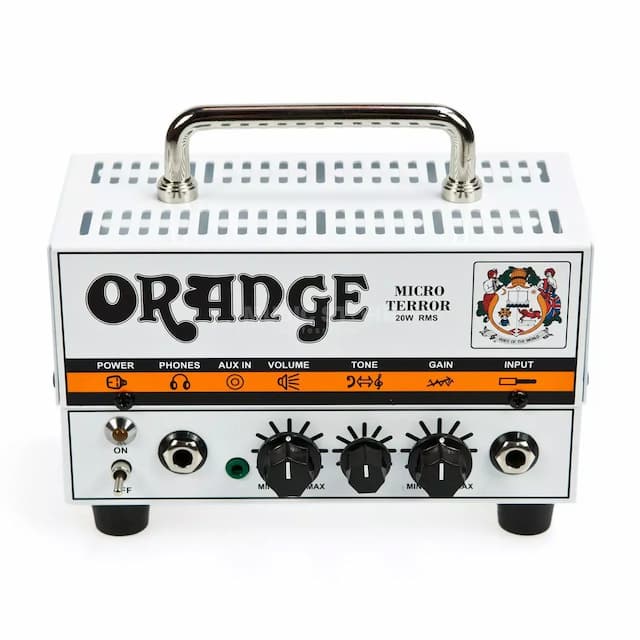
| Specifications: |
|---|
| Watts: 20 |
| Type: Hybrid |
| Preamp tubes: 12AX7 |
| Power amp tubes: Solid-state |
Reasons To Buy
- Compact
- Affordable
Reasons To Avoid
- Not full-tube
- Not that loud
The Orange Micro Terror has a tube preamp and a solid-state power amp. It manages to stay shockingly tiny while delivering 20 watts of output. Through a 4×12 it’s deceptively big. however, due to its low wattage, there’s not really a true ‘clean’ sound on offer.
However, it’s a million times better than the entry-level amps, and at a push, you could probably play small gigs with them.
That said, it’s relatively quiet, and the Tiny Terror is noticeably louder when you’re playing out. Still, for the price, you would still be getting a decent amp.
2. Boss Katana 100 MkII
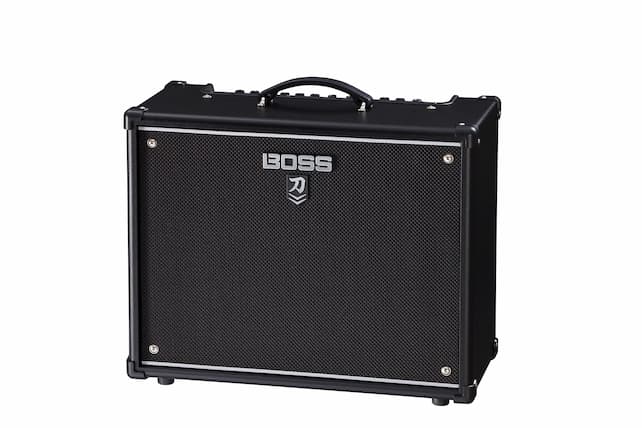
| Specifications: |
|---|
| Watts: 50 |
| Type: Solid-state with digital effects |
| Preamp tubes: N/A |
| Power amp tubes: N/A |
Reasons To Buy
- Large range of sounds
- Great value
Reasons To Avoid
- Needs the software for deep editing
It’s helpful for a learner guitarist to choose an amp that will allow them to experiment with many sounds. Although tube amps are great, they tend to stick to one core job and focus on doing it brilliantly. Digital effects, on the other hand, give the guitarist a chance to try out different sounds and combinations of effects to find the sound that suits them best.
The Boss Katana 100 MKII is the perfect ‘first’ or backup amp for most guitarists. Not only does it pack in a host of Boss effects, along with a selection of great-sounding amp models, but it will also easily manage the step up from practice to small gig. Hooking up the Katana modelling amp to your computer gives you access to deep editing of parameters; it will also record directly into a digital audio workstation via USB.
3. Vox AC15 C1

| Specifications: |
|---|
| Watts: 15 |
| Type: Tube |
| Preamp tubes: 12AX7 |
| Power amp tubes: EL84 |
Reasons To Buy
- Gets that iconic Vox tone
- The tremolo is great!
Reasons To Avoid
- This amp mightn’t be ideal for fans of high gains
Launched over 60 years ago, the Vox AC15 is a veteran in this amp guide. Still, to this day, people gravitate towards that famous grille, lured in by the promise of one of the guitar world’s most famed tones. Everyone from Brian May to the Beatles has used Vox AC amps during their career, drawn towards one of the warmest clean tones out there.
Overall, the Vox AC15 is a great choice for rock, pop and blues. It has a built-in tremolo and reverb sounds which makes for some epic surf-rock tones.
4. Blackstar HT Club 40 MKII
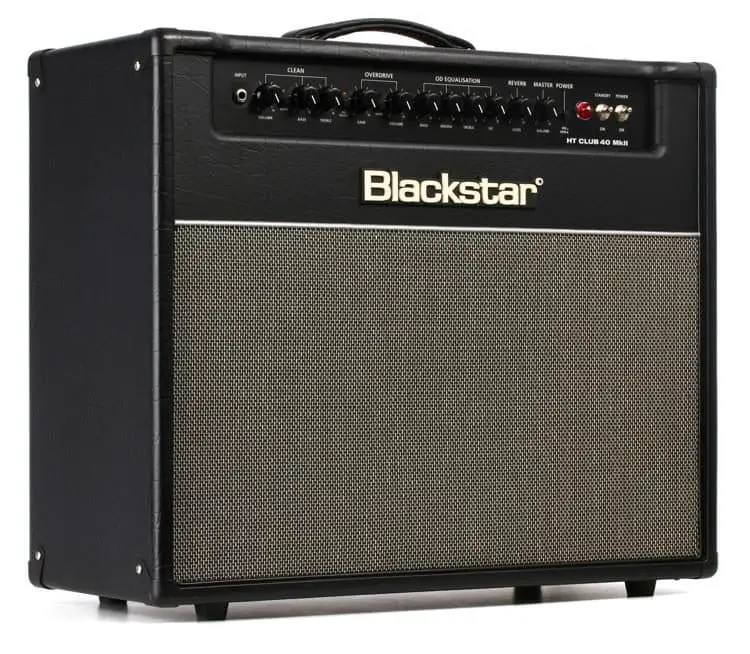
| Specifications: |
|---|
| Watts: 40 |
| Type: Tube |
| Preamp tubes: ECC83 |
| Power amp tubes: EL34 |
Reasons To Buy
- UK/USA voicing switch offers versatility
- Great-sounding reverb
Reasons To Avoid
- The amp could have too many options for some players
It’s hard to come across anyone with a negative opinion on Blackstar’s range of reasonably priced tube amps. You’ll hear common phrases like solid, dependable, reliable and unpretentious when it comes to the Blackstar HT club, and that’s no bad thing. The Blackstar HT Club 40 MKII, is the brand’s mid-range offer. It may not be packed with crazy features that you’ll never use, cost a fortune, or fall apart every time you load in after a show. If you’re looking for an amp with high gain, then the HT Club can throw down the filth with the best of them. On the other hand, if you want an authentic, bell-like clean sound, the Blackstar HT Club can deliver.
Overall, the Blackstar HT Club 40 MKII is a good, solid amp that will do you proud without breaking the bank, much like other models in the HT family. Although it may not set your heart alight with every power chord, it’ll certainly get the job done.
5. Victory V40 The Duchess
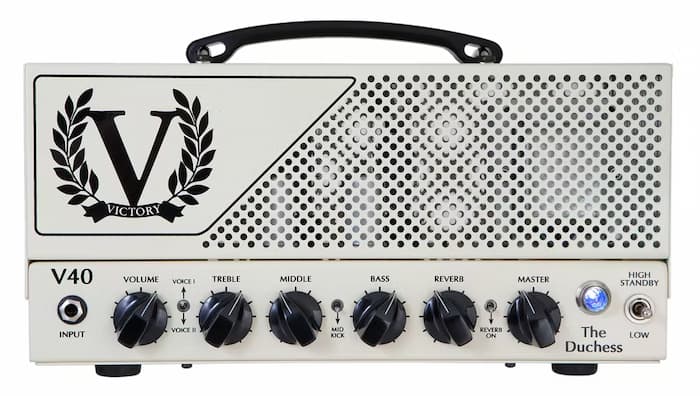
| Specifications: |
|---|
| Watts: 40 (switchable to 7) |
| Type: Tube |
| Preamp tubes: 12AX7 |
| Power amp tubes: EL34 |
Reasons To Buy
- Very clean tones
- Uses pedals exceptionally well
- Super portable lunchbox head
Reasons To Avoid
- Voicings are not can’t be switched by foot
Made by a small team in the UK, the Victory V40, despite its small size, produces some serious noise. It’s a 40-watt, single-channel tube head that can produce both US and UK style tones, and thanks to its significant clean headroom, provides an exceptional pedal platform too.
You may be wondering how this single-channel amp produces so many varied tones – it’s partly down to the introduction of the Voice and Mid Kick switches. With the voice switch in the Voice I position, the Duchess produces a distinctly American tone, with nice flat frequency response. Switching to Voice II offers more of a midrange bark, reminiscent of the British amp tones guitarists love. You can knock the Mid Kick switch to the on position for some more midrange aggression.
If 40W sounds like a bit too much for your needs, then you’ll be pleased to know that Victory has incorporated a 7W low-power mode which is great for keeping your family and neighbors happy. The 7-watt is bedroom-friendly means you can afford to crank the volume and achieve tones that can only come from warm glass – making the V40 even more versatile either at home, gig or studio amp.
6. Peavey Invective .120
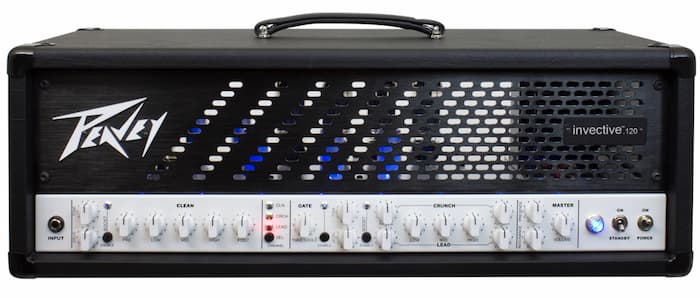
| Specifications: |
|---|
| Watts: 120 |
| Type: Tube |
| Preamp tubes: 12AX7 |
| Power amp tubes: 6L6GC |
Reasons To Buy
- Produces clean and gain channels
- Has modern features
Reasons To Avoid
- Most guitarists don’t need 120 Watts
When it comes to modern metal amp tones, there have been few producers and players that are as influential as the Misha ‘Bulb’ Mansoor of Periphery. Obviously, if you’re looking for djenty modern metal, then the amp is more than capable of delivering.
To begin with, there’s a range of power-switching options, meaning that you won’t have to run it full-blast at 120W the whole time. Second, there’s a boost function that’s modelled on the Ibanez Tubescreamer. This is because many modern metal tones are achieved by smashing the front-end of the tube amp using a Tubescreamer with the ‘level’ control all the way up.
The amp has auxiliary power outs, so you can run your favourite pedals in the amp’s effects loop using the amp as a power source.
Should You Buy A Tube, Solid State Or Digital Amp?
First, there’s the question of whether to choose between an amp that has a tube, solid-state, or a digital amp modeller. When it comes to tubes, you’re getting the benefits of a physical reaction in your playing: genuine electrical artistry spilling from a row of glowing glass tubes. Tubes deliver a rich harmonic warmth that many people flock to, despite all the advances in digital and modelling technology. If you’re driving the power amp section of your amp and playing at stage volume, then the tubes really come into their own in a way that digital and modelling amps can’t typically compete with.
Where digital comes up trumps is through sheer variety and instant gratification. Modern digital amps on the market can pack in approximations of literally hundreds of different models, from all genres, in a way that gives the player a near-infinite tonal palette. It’s for this reason that digital amps are popular in studio environments, where sheer volume isn’t as important as the depth of tone and tweak ability, or with learners who just aren’t quite sure what they want yet.
Solid-state options have come leaps and bounds in recent years, however, there are debates over the quality which still come and go. There’s no denying that class D power-amps and the like are still both small and efficient. They tend to lean towards the cleaner tones, which makes them a great pedalboard-friendly amp, although very few have overdriven and distorted tones that can compete with a more high-end modeller or tube amp.
